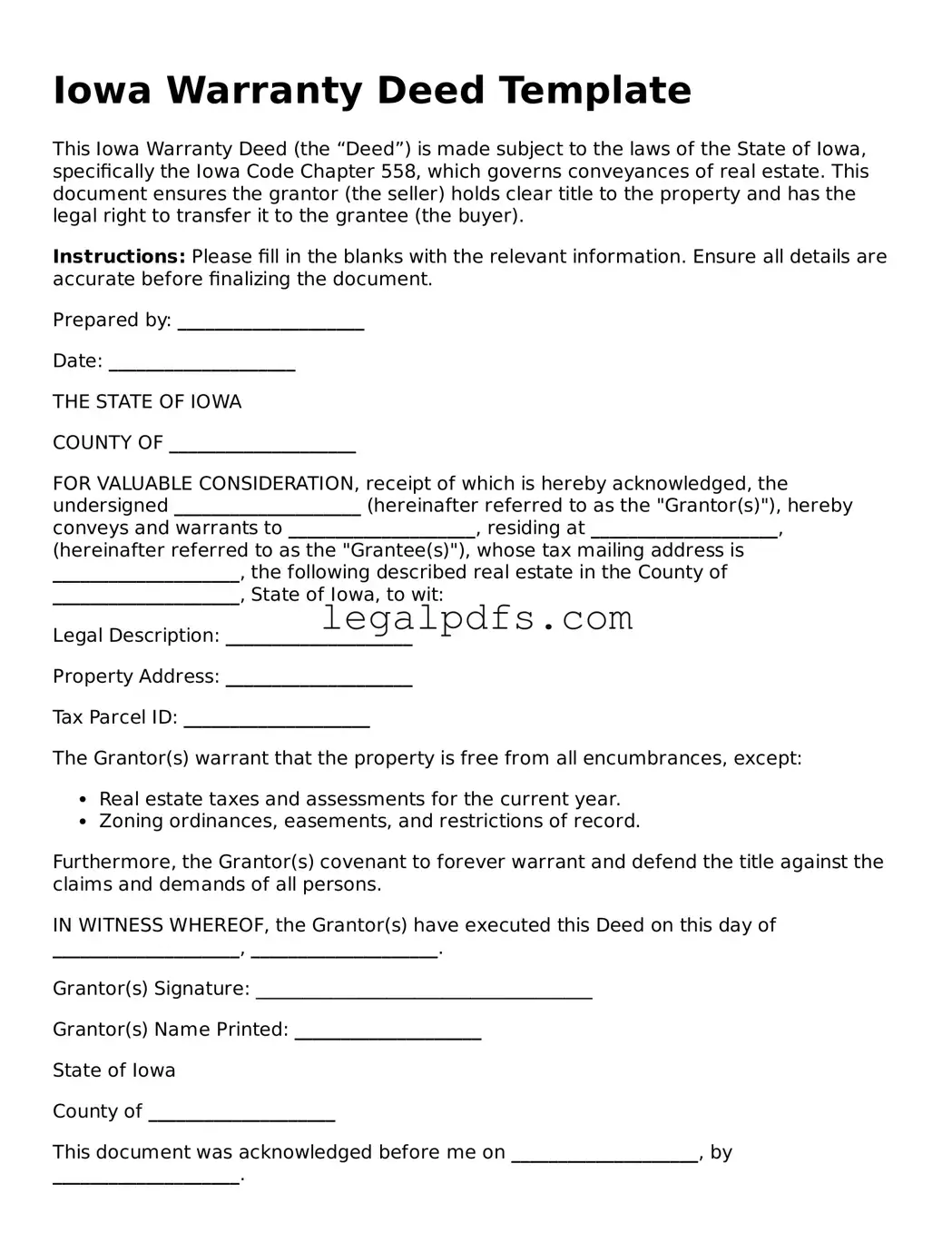Iowa Warranty Deed Template
This Iowa Warranty Deed (the “Deed”) is made subject to the laws of the State of Iowa, specifically the Iowa Code Chapter 558, which governs conveyances of real estate. This document ensures the grantor (the seller) holds clear title to the property and has the legal right to transfer it to the grantee (the buyer).
Instructions: Please fill in the blanks with the relevant information. Ensure all details are accurate before finalizing the document.
Prepared by: ____________________
Date: ____________________
THE STATE OF IOWA
COUNTY OF ____________________
FOR VALUABLE CONSIDERATION, receipt of which is hereby acknowledged, the undersigned
____________________ (hereinafter referred to as the "Grantor(s)"), hereby conveys and warrants to
____________________, residing at
____________________, (hereinafter referred to as the "Grantee(s)"), whose tax mailing address is
____________________, the following described real estate in the County of ____________________, State of Iowa, to wit:
Legal Description: ____________________
Property Address: ____________________
Tax Parcel ID: ____________________
The Grantor(s) warrant that the property is free from all encumbrances, except:
- Real estate taxes and assessments for the current year.
- Zoning ordinances, easements, and restrictions of record.
Furthermore, the Grantor(s) covenant to forever warrant and defend the title against the claims and demands of all persons.
IN WITNESS WHEREOF, the Grantor(s) have executed this Deed on this day of ____________________, ____________________.
Grantor(s) Signature: ____________________________________
Grantor(s) Name Printed: ____________________
State of Iowa
County of ____________________
This document was acknowledged before me on ____________________, by ____________________.
______________________________________
Notary Public
My commission expires: ____________________
